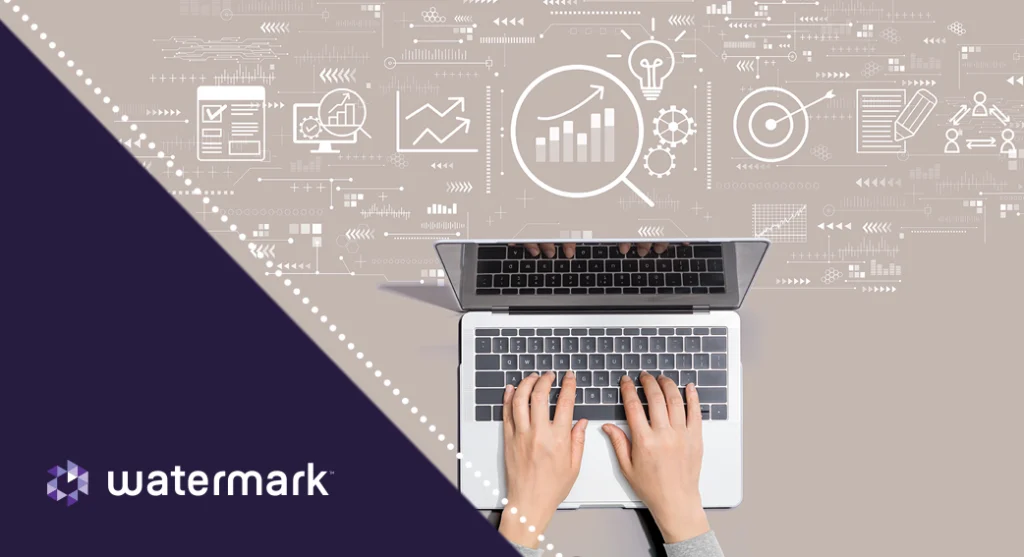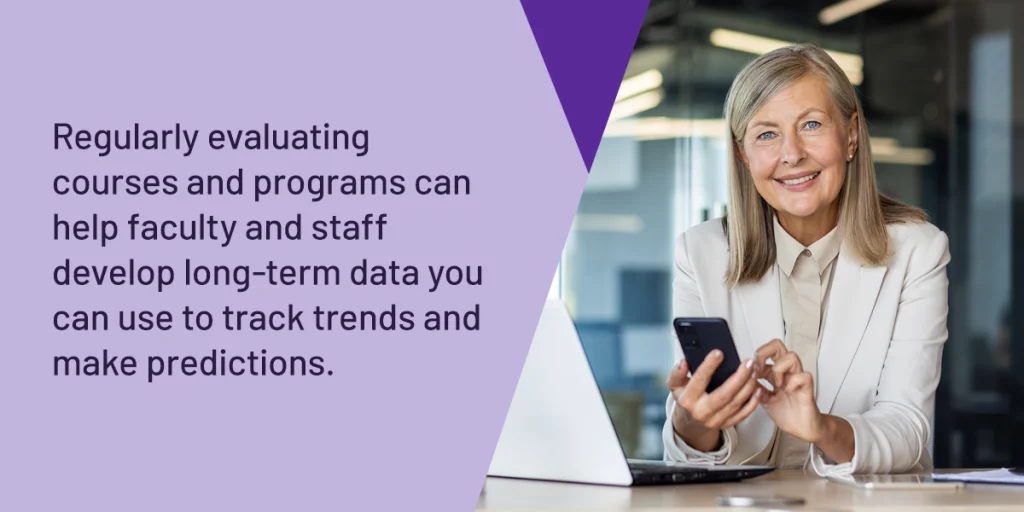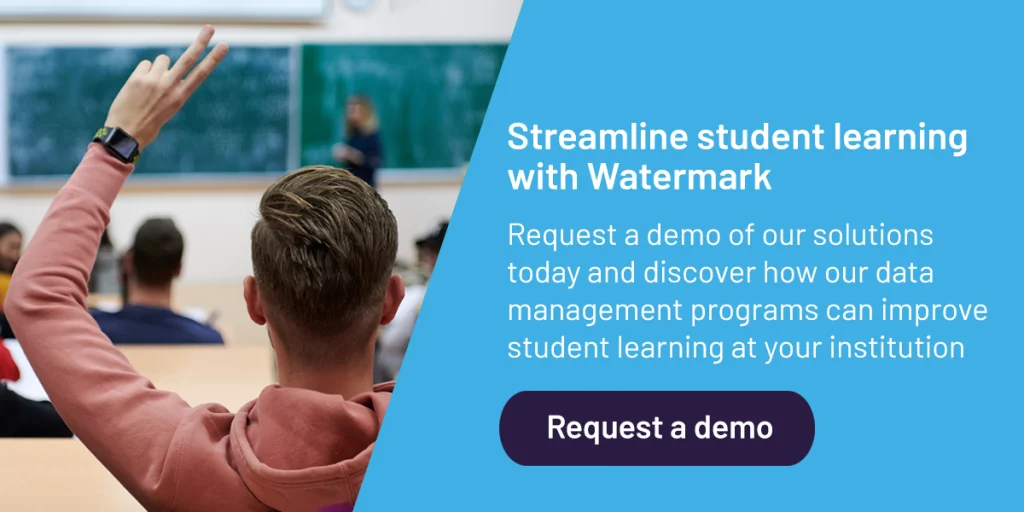
Campuses can use data to report several kinds of information daily and for many purposes. As institutions dedicated to education, student learning should be a priority for faculty and staff. Knowing how to use data for student learning can ensure your institution is best serving its student body.
How connected data is changing higher education
With technological advances allowing higher education institutions to better collect and analyze data, schools have more for analysis available to them. Faculty can access data quickly, especially with data management software, to streamline higher education institution improvements. Some applications of connected data collection include:
- Strengthening decision-making: Connected data allows higher education institutions to pull information from all relevant sources on campus, from larger areas like departments and programs to data from individual students and their performance. Educational planning requires meaningful data analysis and keeping data connected so that decision-makers can better understand how their efforts will affect their intended audience.
- Identifying trends and patterns: Because connected data allows higher education institution officials to pull information from multiple places on their campus, they can better evaluate activity and sort it into patterns and trends. Marking trends helps faculty implement proactive strategies to maintain or improve processes.
- Interacting and communicating with target audiences: Connected data helps pull information from many sources and stores it in one central database. That means marketing and social media teams can work with departments to understand who is interacting with their online presence and determine how best to reach them. Especially when trying to communicate with students, understanding how they choose to view online content can help marketing teams narrow their efforts.
- Improve student and faculty experiences: Having everything stored in a central database can make using internal systems easier for students and faculty. They can better understand the information they need to supply or analyze and easily access it. Improving even small things like data access can help show students and faculty the institution will dedicate itself to making improvements that benefit them.
Connected data has many applications and benefits to higher education institution campuses, but data’s central importance in educational planning makes it particularly impactful for student learning.
4 ways to improve student learning with campus data
While collecting data at higher education institutions can offer many benefits, it is crucial to help students learn and succeed using a multifaceted approach. You can implement effective data collection and analytics strategies to help faculty and staff make the most of your data and ensure you use it in your student’s best interests.
1. Manage every step of the student lifecycle
When you use a data management system to create a more connected database for students and faculty, you can help students track progress and gather information at every step of their student journey
When your students have access to a central database that assists with regular administrative tasks, they can feel more invested in their learning process. Further, if you ask for and implement feedback from your students, they will see and appreciate the efforts you put toward their education.

2. Evaluate course and program success
If you are using data to improve student learning, you will need to regularly evaluate courses and programs and look for areas of improvement. Programs that need drastic changes can be particularly challenging to tackle. Gathering data helps highlight areas that need smaller changes, letting you start with manageable changes before moving on to address student success efforts at all levels.
Regularly evaluating courses and programs can help faculty and staff develop long-term data you can use to track trends and make predictions. Through this, you can take more proactive measures for program and course improvements and give students the tools they need to succeed in their academic life. These may be smaller changes, like adding more sections to a required class to help students graduate on time, or larger changes, like adjustments to program requirements and prerequisites.
3. Pinpoint students who need more assistance
Collecting data at your higher education institution allows you to analyze overall student performance and that of individuals. Professors and faculty can use data collection to zero in on anystudents who are struggling to achieve and who may need more assistance.
Aiming your analysis at improving campus learning for students can help student success programs target who needs their services the most. Whether students need to go to office hours, career planning services, or tutoring, using data to improve student achievement can include highlighting the students who need help succeeding and which tools the school needs to offer them.
4. Improve programs for students
Higher education institutions offer several programs to improve campus learning for students outside of the classroom. From onboarding programs like orientation to programs dedicated to cultivating student success like career and academic aid centers, students can seek out the tools they need to help develop their academic and professional success.
As you should with courses, you should regularly look for ways to improve struggling programs or weak aspects of those programs. Collecting data from program feedback and service usage helps faculty members determine where to implement new strategies to best meet student needs. They can use student feedback, attendance rates, and other essential data to determine where they need improvements.

Streamline student learning with Watermark
Collecting data for campus learning is essential for higher education institutions. Using high-quality data management software can help your institution improve student learning through more centralized data and reports.
At Watermark, we have over 20 years of experience in data collection for higher education institutions. We offer several solutions you can implement at your institution to increase student learning and success, whether at the general institutional and faculty level or using programs specifically designed to help students achieve.
Watermark Course Evaluations & Surveys allows you to efficiently collect and organize feedback from students to determine areas for improvement, which is essential for faculty and staff when making plans and goals. Watermark Student Learning & Licensure provides students with personalized data on their academic and professional success, helping them track their process and navigate internship and job interviews.
Request a demo of our solutions today and discover how our data management programs can improve student learning at your institution.















































































































































































































































































































































































































